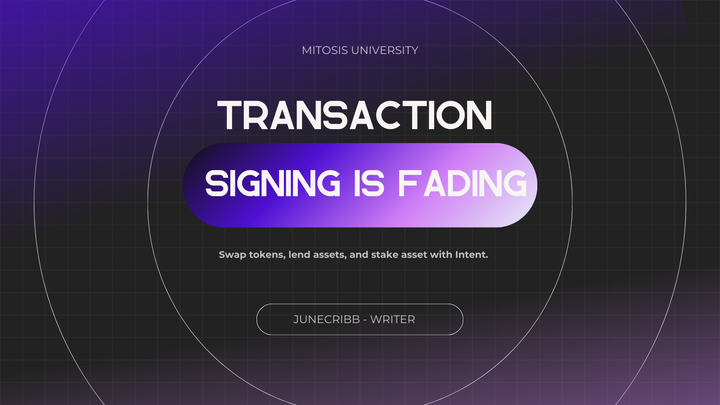Bringing the Concept of Liquidity Clusters to DeFi: Mitosis Vision.

The probability of liquidity flowing seamlessly, whenever traders execute trades at the best price with minimal friction is a zero.
In decentralized finance (DeFi), liquidity is the backbone for an efficient markets yet, we suffer from capital inefficiencies and this often lead to high slippage, price volatility, and fragmented liquidity pools.
Which wasn’t part of the deal when DeFi was accepted.
Grateful, Mitosis came with a solution to provide liquidity for all.
And as a programmable liquidity network, Mitosis is optimizing capital efficiency by clustering liquidity, stabilizing markets, and enhancing trade execution.
Whether you're a trader, liquidity provider, or DeFi enthusiast, understanding liquidity clusters and their role in Mitosis will help you understand how important this is for DeFi.
In this article, we’ll break down:
✅ What liquidity clusters are and how they work.
✅ The unique characteristics of Mitosis-powered liquidity clusters.
✅ How Mitosis enhances market stability, price discovery, and efficiency.
✅ Real-world applications of Mitosis in DeFi.
By the end, you'll have a clearer understanding of how programmable liquidity can redefine the future of DeFi.
Understanding Liquidity Clusters
Liquidity clusters are concentrations of buy and sell orders at specific price levels. In traditional finance, market participants often analyze liquidity clusters to predict price movements and optimize trade execution.
Mitosis brings this concept to DeFi, using automated strategies and smart contract-based liquidity provision to create programmable liquidity clusters that improve market efficiency.
In essence, these clusters function as strategic pools of liquidity across various DeFi protocols, ensuring assets remain highly tradable, price execution is optimal, transparency is obtained and capital is utilized efficiently.
Characteristics of Liquidity Clusters in Mitosis
Mitosis-powered liquidity clusters provide several advantages that enhance DeFi trading and Liquidity pool management.
These advantage/characteristics include:
- Price Stability: High liquidity concentrations reduce volatility and ensure a fair price range.
- Lower Transaction Costs: Liquidity clustering minimizes slippage, allowing traders to execute orders at a more predictable prices.
- Predictive Power: Traders and liquidity providers can analyze liquidity clusters to anticipate price trends and market movements.
- Programmable Efficiency: Smart contracts in Mitosis allocate liquidity based on market conditions, which optimizes capital distribution.
How Mitosis Enhances Liquidity Distribution
Mitosis operates as a programmable liquidity network, constantly redistributing liquidity to optimize market conditions in DeFi.
Here’s how this works:
- Automated Liquidity Allocation:
Mitosis uses smart contracts to analyze real-time market demand and distribute liquidity accordingly. This ensures that high-demand assets receive adequate liquidity while preventing inefficient capital allocation. - Reducing Slippage:
By clustering liquidity in key trading zones, Mitosis significantly reduces the difference between the expected and actual execution price, benefiting both traders and investors. - Supporting Algorithmic Trading:
Mitosis-powered liquidity clusters adapt to algorithmic trading strategies, allowing efficient market-making, arbitrage, and automated liquidity provision. - Facilitating Price Discovery:
Liquidity clusters enhance transparency in price discovery by ensuring that supply and demand are balanced, leading to more accurate and fair pricing. - Enhancing Market Depth:
With continuous liquidity distribution, Mitosis strengthens market depth by reducing order book gaps and ensuring smooth, efficient trading experiences.
Practical Applications of Mitosis in DeFi
Mitosis brings innovation to DeFi by introducing programmable liquidity mechanisms that benefit various sectors within the ecosystem like the:
- Automated Market Maker (AMM): Platforms like Uniswap and Curve benefit from Mitosis-powered liquidity clusters, improving swap efficiency and reducing impermanent loss.
- Lending and Borrowing Protocols: Mitosis optimizes liquidity provisioning in DeFi lending platforms, ensuring capital efficiency while maintaining stable borrowing and lending rates.
- Yield Optimization: Investors can strategically allocate funds based on liquidity cluster analysis, maximizing returns while minimizing risks.
- Cross-Chain Liquidity: Mitosis enhances interoperability by providing liquidity bridges across multiple blockchain networks, enabling seamless asset transfers and reducing fragmentation.
Conclusion
Mitosis is redefining liquidity management in DeFi through programmable liquidity clusters that enhance capital efficiency, stabilize markets, and improve trading conditions. By using smart contracts and algorithmic trading, Mitosis ensures that liquidity is allocated where it is needed the most.
DeFi users need to understand the role of liquidity clusters within Mitosis because it empowers traders, liquidity providers, and DeFi participants to navigate markets with greater confidence. And as DeFi continues to evolve, Mitosis is paving the way for a more efficient and interconnected financial system.
Reference



Comments ()